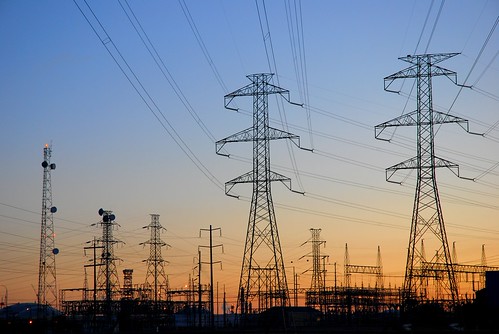Again this week I would like to thank everyone for responding to my Electric Grid Questions. This week I will address the other two questions:
2- What determines the capacity needs of the power plant? Is it the installed capacity in the network (each appliance and circuit in each house, office and factory) or is it the historic average consumption of electricity?
3- Why can’t we have a direct current (DC) grid? Many alternative energy technologies struggle with the conversion from DC to AC (alternative current). Why do we need to use AC everywhere?
First of all, about the capacity. This question was difficult to formulate and it was also misunderstood on several responses. The reason for this question is to find out if there is something that can be done regarding Watts and Amperes of new appliances and alternative power sources to minimize the required capacity of new power generation.
At the end of the day my understanding is that even with the most efficient appliances in the grid, power generation and distribution is still a statistical game, and this is EXACTLY where the so called "smart" grid will contribute to energy savings. Power plants generate at constant preset levels and additional capacity is turned on or off based on "peak demand"
Regarding DC vs AC I gather that the big problem of DC is the inefficiency of transporting this current from the source to the user. But, I definitely see an opportunity in generating locally DC power and using it in DC appliances without wasting electricity in DC to AC conversion.
The other problem of the DC power is that many appliances relay on the frequency of the AC electricity to work properly. Many people also mentioned the fact that DC components are much more expensive than AC components. I believe the answer to both this issues relies on the fact that AC has been mainstream while DC has been kept in the dark. If we inject new force in the DC solution then we will find that the market will generate new ideas and better pricing for DC applications.
Some of the answers received:
"2. The capacity needs of the power plant should be based on total load installed [maximum consumption] + some allowance for VAR correction + anticipated or estimated future augmentation [load additions]
3. DC generation & distribution equipments are far more expensive than the AC equipments like generator, transformers, safety devices etc. Its comparatively cheaper to convert it at user end [the converter modules with the chord would not be more than $30 each"
"Dumb Grid allows double digit percentages of electricity to escape and a new Smart Grid would not.
The U.S. will need to install a new Smart Grid system if there is any chance of going to electric cars.
AC vs DC: AC technology is much more flexible and has a strong economic advantage as DC requires very thick copper."
"...why is there no DC? First, there are increasing uses of DC power in parts of the grid that consumers don't see. DC power can be used now for relatively long distance power transmission. But to switch the entire grid and each and every device that uses electricity from AC to DC would clearly be impossible. There may be room for DC in some applications; but not on a widespread basis."
"#2 - I think plant size is governed by politics, dollars available and demand.
#3 DC does not travel well. over distances the voltage drops. not true with ac. ac losses are in current - not volts."
"We could have a DC grid, and yes it would be much more efficient, but it is highly unlikely to happen in our lifetime because no one will accept going without power long enough to switch the system around and highly unlikely investors or the government would pay to do it."
"2) Make the consumer more mindful of their power usage by forcing them to look at the data in the power distribution console/display or connected smart appliances designed to take advantage of data communications technologies built into both appliances, devices and the smart meter interface"
"2)There are additional needs to consider, including extra reserve capacity, based on rules from NERC/FERC. No one wants to experience a blackout or brownout, so the generators/systems/transmission lines all have extra capacity designed in
3)There are several examples of HVDC in North America. When it is most economically feasible, HVDC is used"
"2.There are no ideal figures for per capita electricity consumption as the same can be open ended.At the household level,one could consume as much electricity as one wants depending on availability.At the industry level,one could keep setting up newer manufacturing units once again depending upon availability of electricity.The best way is to link it to nominal and per capita GDP growth rate which the government plans to achieve.Growth in electricity generation must lead GDP growth by a factor of about 1.4 to 1.5.
3.This goes back to epic debate of AC vc DC between Nikola Tesla and Edison.AC won over DC and hence AC grids were set up.A DC grid needs inversion equipment which adds to the cost. However there is a realization that DC is more economical with lesser losses than AC over distances longer than 800 kms.There are now quite a few HVDC grids being set up."
"I believe that as alternative energy evolves, as more and more end users are using solar power, as LED lighting becomes the norm, that AC will eventually become extinct. The "grid" concept will be redundant"
"Transmission losses are the big dirty secret of centralized power."
Until next week... SHALOM!





